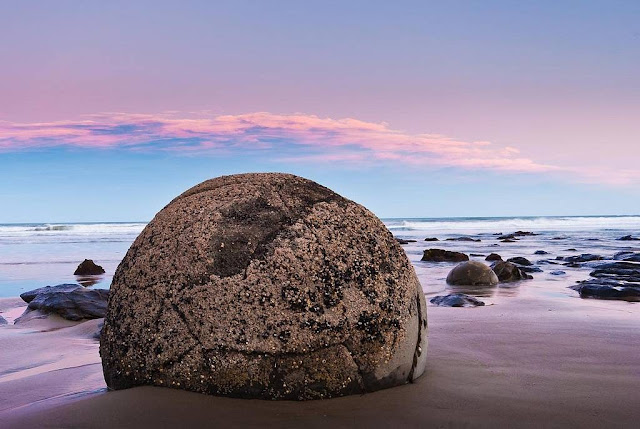Tuesday, August 06, 2013
Some are isolated but may occur in clusters. That they are here is the result of three things – erosion, concretion and time. First the waves, inexorable and patient, have pounded the local bedrock for countless millennia. The mudstone on the beach – rock which was originally mud and clay – is slowly but surely eroded. Underneath are the boulders that the mudstone – in its original wet form, helped to form. However, the boulders were not there to begin with – that came later.
Many of the Moeraki boulders give the impression of being completely spherical – and they almost are. They are septarian concretions – a sedimentary rock that has had the space between its individual grains filled up by minerals which acted like cement. Concretions form inside the layers of mud and clay and are not, as some think, boulders buried over time.
What is significant about these concretions is their size. They are big. While not unique on the planet, some of them are up to a meter in diameter but the majority range from 1.5 to 2.2 meters – that is almost seven feet in diameter. Most of them are almost perfect spheres.
Yet sometimes time does ravage them and they split or simply fall apart.
There are large cracks on the boulders and these are known as septaria. The center of each boulder is hollow and the septaria radiate from there. It is not really known what causes these septaria but they can be filled up by several layers of calcite themselves and sometimes an extremely thin layer of quartz.
The Moeraki boulders date from the Paleocene epoch which translates as the early recent. In geological terms that may well be true, but that means that the boulders are at least fifty six million years old. Our own mammalian ancestors during that epoch were mostly small and rodent like.





No comments:
Post a Comment